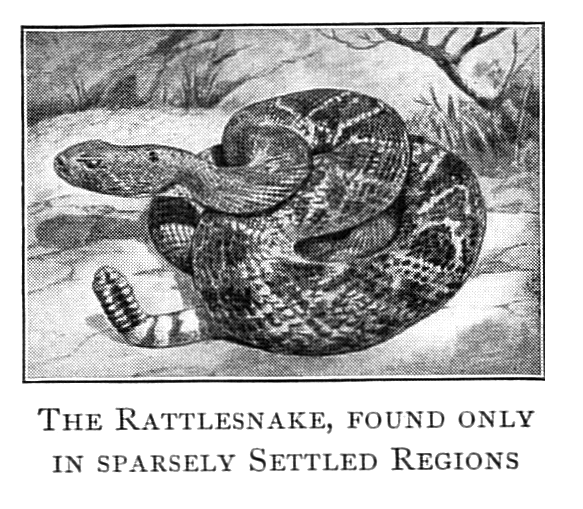In the nearly two decades that I spent as newspaper reporter, it is hard for me to recall a meeting as strange and slippery as the one I went to last night, of the “Rattlesnake Review Group” in Belchertown. I couldn’t tell you exactly what this group’s powers are, and would be suspicious of anyone who claimed to know, or slap a timeline on it.
In the past, I’ve heard that the state wants to build the equivalent of luxury condos for rattlesnakes on an island in the Quabbin Reservoir. Yet, in the 90 minutes I spent at the meeting, I did not hear the Quabbin mentioned once, as if the name itself was venomous and needed to be tiptoed around delicately. Mount Zion Island in Petersham, which IS on the Quabbin, was furtively named a few times, followed by hasty comments that this island was “off the table” or “on the back burner.” If that is truly the case, one wonders why there was a Rattlesnake Review Group meeting in Belchertown last night at all.

When I arrived, a room in Town Hall was packed with upwards of 75 anxious-looking people, who were hearing a lengthy presentation from State Herpetologist Mike Jones. A slender fellow in a yellow striped tie, with hair shaved close to the scalp, Jones did bring to mind the research proving that people look like their pets, or in this case, their pet conservation species.
Jones listed Hadley, Sunderland and Deerfield, along with New Salem, as among the local towns where the Timber Rattlesnake once held sway. The snakes’ homesteading claims go back long before you and me, by a piddling, if unspecific, “6,000 to 9,000 years.”
We heard about the snakes’ sorry decline between 1620 and 1950, the result of people actually trying to eradicate poisonous snakes, along with declining habitat and deforestation. Massachusetts highways, such as Routes 1, 93, 95, and 128, (not to mention that fat cobra, the Massachusetts turnpike) bisected and thus destroyed established rattlesnake neighborhoods. Jones displayed newspaper articles attesting to the willful murder of rattlers in Gt. Barrington and Stockbridge up through 1950s; and talked about people who still harass the hapless snakes today, who are suffering from genetic drift. (The snakes, that is.)
Currently, threats to the rattlers include collectors (quirky folk that they may be) road mortality (sorry for the squishy mental image here) harassment (ostensibly not from telemarketers) and reduced fitness, from spending too much time on electronic devices. Actually, it is from inbreeding, fungal disease, and, you guessed it, genetic drift.
Drift was the overwhelming feeling as pressing questions, like about how big the snake colony would be, and whether it would endanger Quabbin hikers, were barely addressed. No public comments were allowed. One woman piped up nonetheless, saying she drove two hours to get to the meeting. Snakes living in the Quabbin, she warned, could breed and then get into the aqueducts. “One state group has no right to speak for everyone … without putting it on the ballot,” she said. Her point – about whether a referendum on the project is necessary – slipped away, apparently unnoticed.
The review group officiously voted to “table” public comment, not long after a boisterous fellow to my right hollered something like “So who’s for, and who’s against?” One can only presume that he meant a big snake colony, but we will never know.

A few men on the review group may have already had their Ovaltine for the night, but the women tried, somewhat desperately, to get answers. One asked Jones repeatedly how many rattlesnakes there are in Massachusetts today, a basic bite of information which alone would have inspired less anxiety than the state’s forked-tongue failure to address safety concerns head-on. Jones deftly slithered ‘round the question, with remarks about snake demographics and the health of snake colonies, but finally gave in, stating that he believes there are “more than 200, and less than 400” rattlers now at five (undisclosed) sites throughout the Commonwealth. He did not say what the ideal number of Timber Rattlesnakes would be, or how many poisonous snakes would be, well, just too many.
While not mentioning the Quabbin specifically, Jones talked about necessary conservation and restoration actions, which could include protecting “key parcels” and restricting public access to them; enrolling baby snakes in a beneficial “headstart” program (where I assume apple juice and graham crackers would be served) strategically closing park roads, and restoring rattlesnakes “to a fully protected location.”
If such a program went forward, Jones said, five to 10 young snakes from the Roger Williams Park Zoo would be placed at a selected “overwintering” site, presumably a toasty place full of books and throw pillows, and then be released to their new forever home in spring. They would somehow be tracked by radio, a point on which I deeply yearned to question Jones. (If I’d been a fourth grader, I would have waved my hand frantically in the air, as I was impractically imagining snakes wearing headphones and tuned into NPR.)
Early on, Jones said the snakes can travel up to four miles, but when the gentleman in the blue sweater asked if they could travel that far “in water,” Jones immediately backtracked, stating that only the most wily, adventuresome males will undertake such journeys, and that four miles is an overestimate of typical rattler travel. (Some, like me, were left wondering if the FEMALE rattlers ever get away for the weekend.)
A Rattlesnake Review Group member with a short white beard, made it clear that he has nothing against existing rattlers, but doesn’t believe they should come to occupy new neighborhoods. “People are in agreement that they’d like to protect them where they are,” he said.

Another fellow, with a longer beard, noted that any restoration efforts will be without fangs if laws protecting snakes are not enforced. He recalled “a guy” who a few years back walked off a local mountain with a rattlesnake “in his backpack,” and was fined only $50, which prevented him from buying pizza on the way home. I think he said the man was bitten, too, and that police who responded sliced up the snake, but my mind may just have been, um, drifting.
The Massachusetts Rattlesnake Conservation Plan Survey, at mass-gov/dfw/rattlesnake-summary, has gotten 73 responses, including only four “opposed,” a group member said. People in the audience hissed that this survey was not well-advertised. The Rattlesnake Review Group spent many minutes discussing its Internet presence, and the complications of getting information to the front of the Department of Fisheries & Wildlife website.
It was noted that an “I.T. guy” might be necessary. I gathered that trying to connect with such a guy, and explain it all to him, might be about as difficult as tracking down a rattler on Cape Cod, where the snakes neither reside, nor take summer vacations. Which may just be an argument for heading to the Cape this summer – with an I.T. guy, if you can find one.
I apologize for sounding unsympathetic. As my 8-year-old noted this morning, people and their cars have millions of places – and the rattlesnakes have next to none these days. I am not opposed, necessarily, to a rattler colony at the Quabbin, but I do feel as though the details of it and its management have slithered off, and must be netted, before anyone can be charmed.
You can read the “Executive Summary” for the Massachusetts Rattlesnake Conservation Plan, just for fun, at mass.gov/dfw/rattlesnake-summary.


Maybe put all those state officials on that island and see what happens?
LikeLike